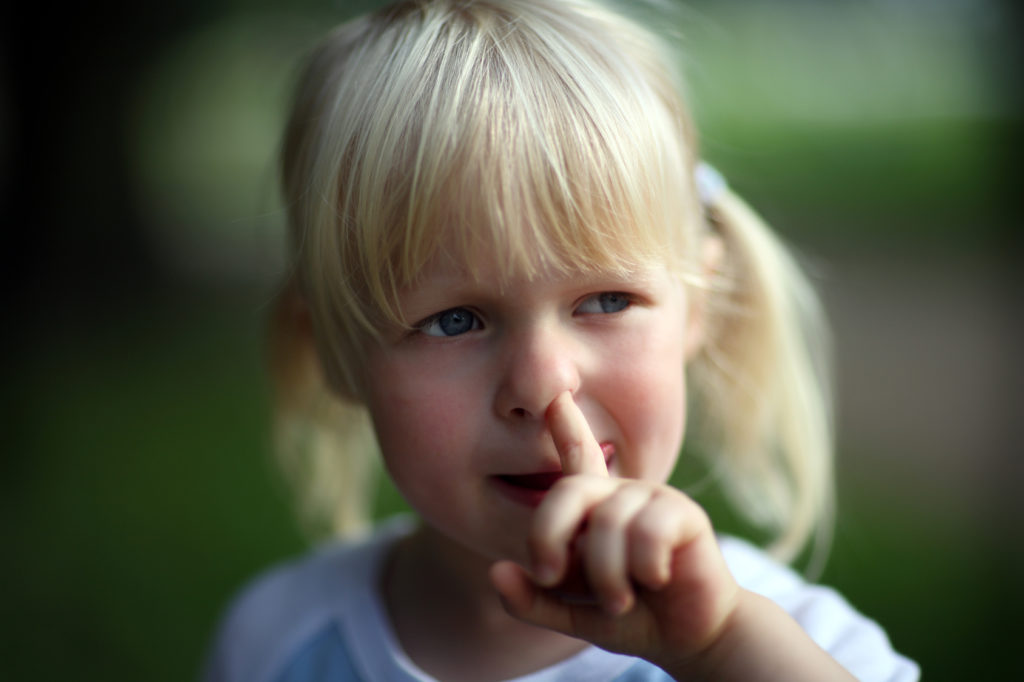Unhealthy pick your nose: in Through the nose, dangerous bacteria are widely used to drill
Although it is generally regarded as unhygienic, picking not only children but also many adults from time to time in the nose. This can contribute to a dangerous bacteria spread in a study by British scientists showed.
Life-threatening diseases by widespread bacteria
Pneumococcal bacteria, which are found in many people in the mouth, nose, and throat are the cause without a disease. If the immune system cannot keep the pathogen but in chess, you can cause of spreading and infections, such as sinusitis or otitis media. However, potentially life-threatening diseases such as brain, skin inflammation, and blood poisoning on these bacteria. And also a large part of the lung can be triggered inflammation by Streptococcus pneumoniae. So far, it is assumed that the pathogens are transmitted by droplet infection. A study, however, suggests that Rubbing the nose, and nose-Picking contribute significantly to the spread of pneumococci.

Children are the main vectors are
As the researchers from the United Kingdom held that it was the understanding of the Transmission of pneumococci is important, as more than 1.2 million infant deaths are due to the bacteria.
“We know that children are much more likely to pneumococcus in their nose as an adult, and other studies have shown that children are the main vectors of these bacteria are in the community,” said Dr. Victoria Connor of the Liverpool School of Tropical Medicine and the Royal Liverpool Hospital, according to an article in the journal “Healio”.
“Therefore, the results of the study are in adults, probably for children is of great importance.”
The study was published in the journal “European Respiratory Journal”.
Easier Transmission of pneumococci in a humid environment
To reach their conclusions, have been placed back on the scientist between April and may 2017 in the case of 40 healthy adult participants pneumococci on the finger tip or the hand.
Once the bacteria had been administered, were instructed, the subjects to sniff either the bacteria or direct contact with the surface of the nasal mucosa, similar to the Nose or Rubbing the nose.
The contact with the bacteria took place while the solution was still wet, or one to two minutes after the pneumococci were applied.
Nine days later, observed by Connor and her colleagues at 20 percent of the participants, to which pneumococci were administered, a bacteria colonization.
Those who were asked to touch their nose with a damp bacteria solution, had back the highest colonization rate (40 percent), followed by those that were asked to your hand with the damp bacterial solution to sniff (30 percent).
According to the researchers, the bacterial colonization was at the same procedure with a dry bacterial substance is significantly less. In the case of the “Nose-pickers” were there only ten per cent, and in the case of the “Hand-sniffers” there was no Bacteria.
In the damp environment, a Transmission of pneumococci managed so easier.
On the consistent hand hygiene
Connor said that the hands of adults can spread bacteria, and this can be important if you come with children and older people with weakened immune systems in contact.
The researcher suggested that the adults should pay attention if you come up with these population groups in contact, particularly on a consistent hand hygiene.
In addition, toys and surfaces should be cleaned regularly to reduce the likelihood of Transmission.
“For parents this study shows that the hands probably pneumococci spread, which is important if children with older Relatives or Relatives with a compromised immune system come in contact,” said Connor.
“In such situations, a good hand hygiene and the cleaning of toys and surfaces would reduce the Transmission.”
Preventive Vaccination
It is also useful in a preventive vaccination could be.
To all persons to whom the Standing Committee on vaccination (STIKO) recommends the pneumococcal vaccination, to bear the health insurance cost for children up to two years and adults over 60, as well as Immuno-compromised and people with certain chronic diseases.
The pneumococcal vaccination is done with Inactivated vaccine, the side – by-side with the other injected, for example, with the flu vaccination-but in the same Arm or thigh.
Children up to two years, three times vaccinated in certain months of life against pneumococcal disease.
This is also the same time with another pinch as the six-fold vaccination (against diphtheria, Tetanus (lockjaw), polio (Polio), whooping cough (Pertussis), Haemophilus influenzae type b (Hib), and Hepatitis B). (ad)